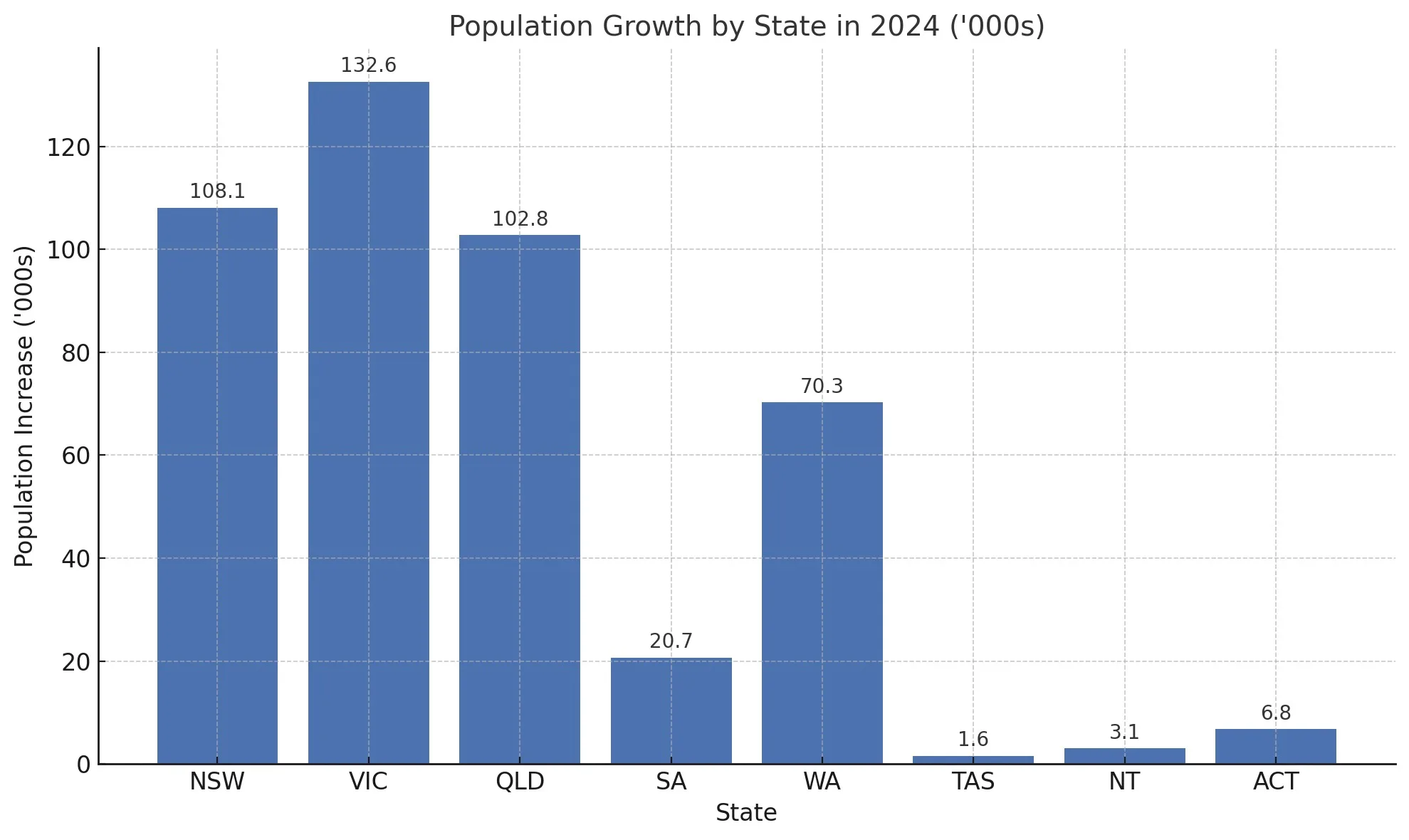You feel it before you see the numbers.
Rents are climbing. Vacancies are shrinking. People are staying longer in temporary setups, house-sharing into their 30s, or competing with ten others just to secure a place.
And still, the question lingers: Where is everyone supposed to live?
This isn’t just about affordability anymore. It’s about availability. Fit. Flexibility. Dignity. We’re not just short on homes. We’re short on the kinds of homes people actually need.
Then comes the number: 445,900.
That’s how many people were added to Australia’s population last year, according to the ABS.
Suddenly, it all makes sense. The long queues. The rising rents. The quiet stress at dinner tables and in share houses. It’s not just a statistic. It’s a signal. Of change. Of growth. Of pressure on housing systems already under strain.
Growth brings opportunity. But it also brings responsibility. More people need more homes affordable, accessible, and designed for how people live today.
Why co-living matters now
This is where co-living comes in.
Not as a trend. Not as a buzzword. But as a practical, flexible housing option for a growing, changing population.
At its best, co-living isn’t about cramming people into small spaces. It’s about well-designed homes that balance private rooms with shared amenities, shorter leases, furnished spaces, and built-in community.
It works for people new to the country, new to the city, or simply at a stage in life where flexibility matters. It makes settling in easier, no full lease, no furniture shopping, no utility setup headaches.
It’s a housing style that fits how life works now.
The rules are catching up
Across Australia, regulation is evolving, but unevenly:
- Victoria: No dedicated co-living laws yet. Most projects fall under rooming house rules, requiring council registration, minimum standards, and licensing compliance.
- New South Wales: A step ahead, with planning rules that formally recognise co-living, covering room sizes, shared spaces, and amenity requirements.
- Queensland: No dedicated co-living rules yet, but councils like Brisbane are starting to explore the model under existing frameworks.
- Other states and territories: Mostly rely on rooming or boarding house definitions, with no dedicated co-living legislation in place.
For now, co-living is growing faster than the rules designed to regulate it.
The bigger picture
Population growth isn’t coming. It’s here.
In 2024 alone:
- Victoria added 132,000+ people
- Queensland grew by 102,000+
- Western Australia welcomed 70,000+
- NSW added 100,000+, even as a mature market
That’s one year. And it’s putting real pressure on housing supply, planning systems, and affordability.
But it also creates an opportunity to rethink what we build and who we build it for. Smaller formats. Flexible leases. Shared options done well, with care and quality.
Co-living isn’t the whole answer. But it’s part of a bigger one especially for people arriving, restarting, or simply looking for a better way to live.
A quieter kind of housing solution
This isn’t about chasing trends. It’s about meeting real needs.
Co-living is already working in converted hotels, retrofitted apartments, and newly built projects across Australia. People are choosing it not just because it’s cheaper, but because it suits their lives.
Less hassle. More connection. A softer landing.
It won’t be for everyone. But for the right people, at the right time, it works.
And with 445,900 new people calling Australia home in a single year, we need more housing options that work.
It’s time to make room for them.


